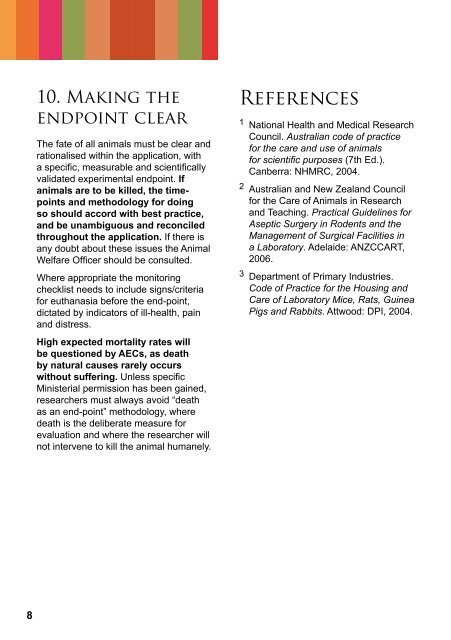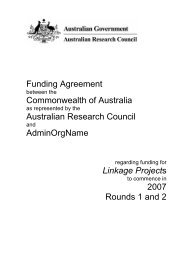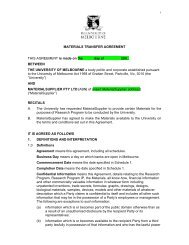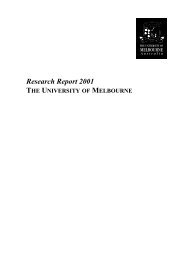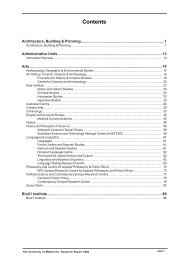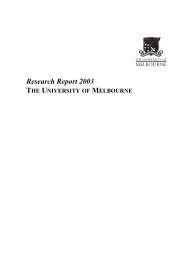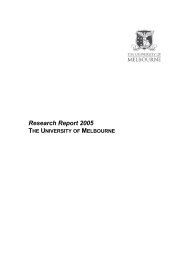Ten Top Tips for Animal Ethics Application Success - Melbourne ...
Ten Top Tips for Animal Ethics Application Success - Melbourne ...
Ten Top Tips for Animal Ethics Application Success - Melbourne ...
You also want an ePaper? Increase the reach of your titles
YUMPU automatically turns print PDFs into web optimized ePapers that Google loves.
8<br />
10. Making the<br />
endpoint clear<br />
The fate of all animals must be clear and<br />
rationalised within the application, with<br />
a specific, measurable and scientifically<br />
validated experimental endpoint. If<br />
animals are to be killed, the timepoints<br />
and methodology <strong>for</strong> doing<br />
so should accord with best practice,<br />
and be unambiguous and reconciled<br />
throughout the application. If there is<br />
any doubt about these issues the <strong>Animal</strong><br />
Welfare Officer should be consulted.<br />
Where appropriate the monitoring<br />
checklist needs to include signs/criteria<br />
<strong>for</strong> euthanasia be<strong>for</strong>e the end-point,<br />
dictated by indicators of ill-health, pain<br />
and distress.<br />
High expected mortality rates will<br />
be questioned by AECs, as death<br />
by natural causes rarely occurs<br />
without suffering. Unless specific<br />
Ministerial permission has been gained,<br />
researchers must always avoid “death<br />
as an end-point” methodology, where<br />
death is the deliberate measure <strong>for</strong><br />
evaluation and where the researcher will<br />
not intervene to kill the animal humanely.<br />
References<br />
1 National Health and Medical Research<br />
Council. Australian code of practice<br />
<strong>for</strong> the care and use of animals<br />
<strong>for</strong> scientific purposes (7th Ed.).<br />
Canberra: NHMRC, 2004.<br />
2 Australian and New Zealand Council<br />
<strong>for</strong> the Care of <strong>Animal</strong>s in Research<br />
and Teaching. Practical Guidelines <strong>for</strong><br />
Aseptic Surgery in Rodents and the<br />
Management of Surgical Facilities in<br />
a Laboratory. Adelaide: ANZCCART,<br />
2006.<br />
3 Department of Primary Industries.<br />
Code of Practice <strong>for</strong> the Housing and<br />
Care of Laboratory Mice, Rats, Guinea<br />
Pigs and Rabbits. Attwood: DPI, 2004.


